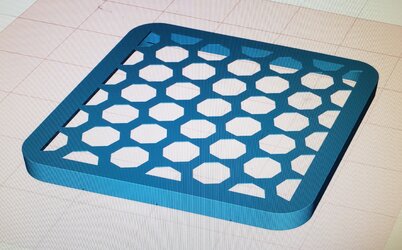- Joined
- Nov 21, 2018
Got bored at work so I decided to make a thermal paste stencil for Ryzen's.
Rev one to test the paste amount and coverage. Final version will look much different and be set up for ease of use. Just squeegee it on then lift the stencil and your done.
Now this is 100% pointless. But for doing test on thermal paste this makes the application amount the same every time as well as the application. So it removes the possibility of user error.

Rev one to test the paste amount and coverage. Final version will look much different and be set up for ease of use. Just squeegee it on then lift the stencil and your done.
Now this is 100% pointless. But for doing test on thermal paste this makes the application amount the same every time as well as the application. So it removes the possibility of user error.

 and
and 



